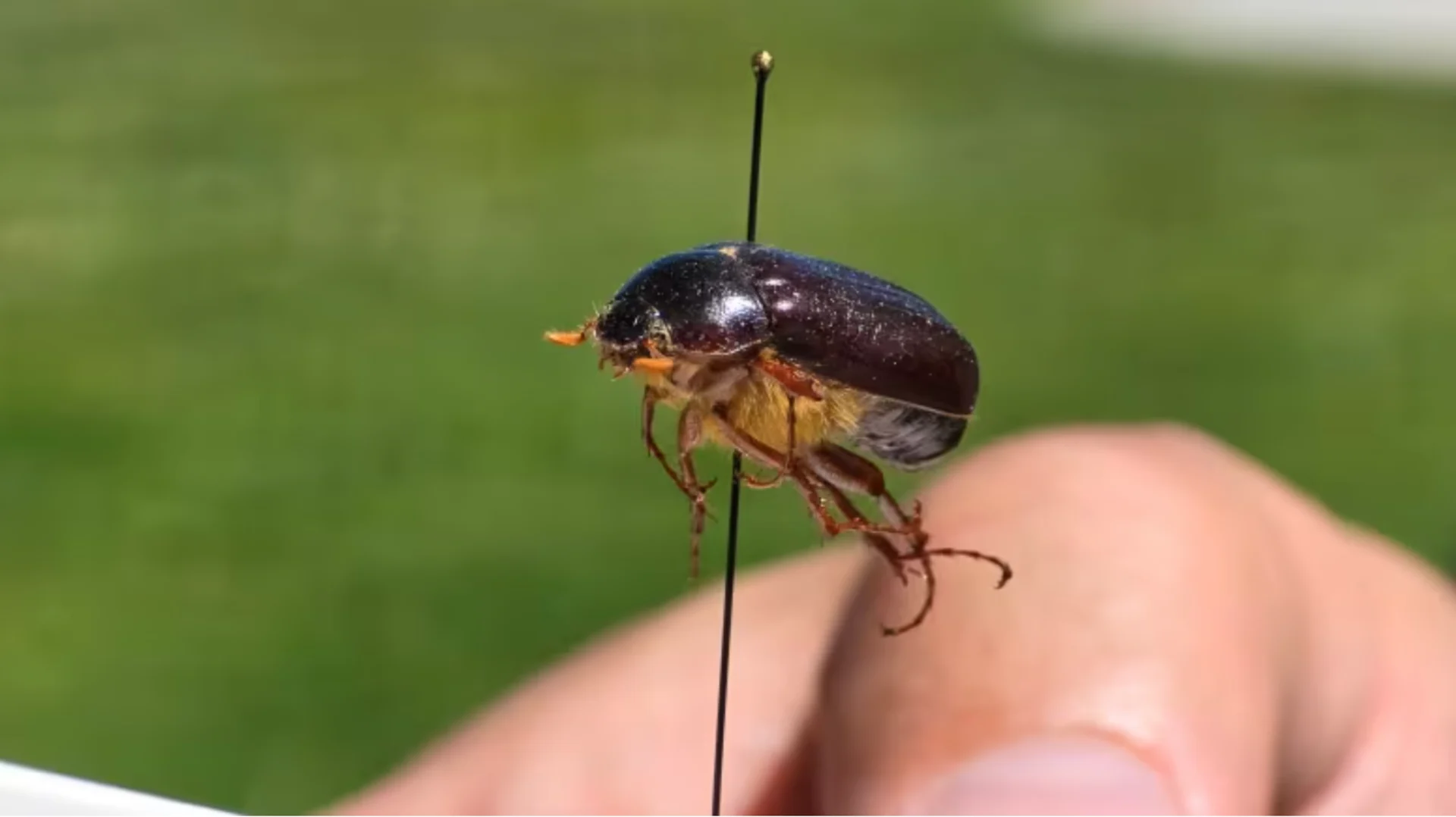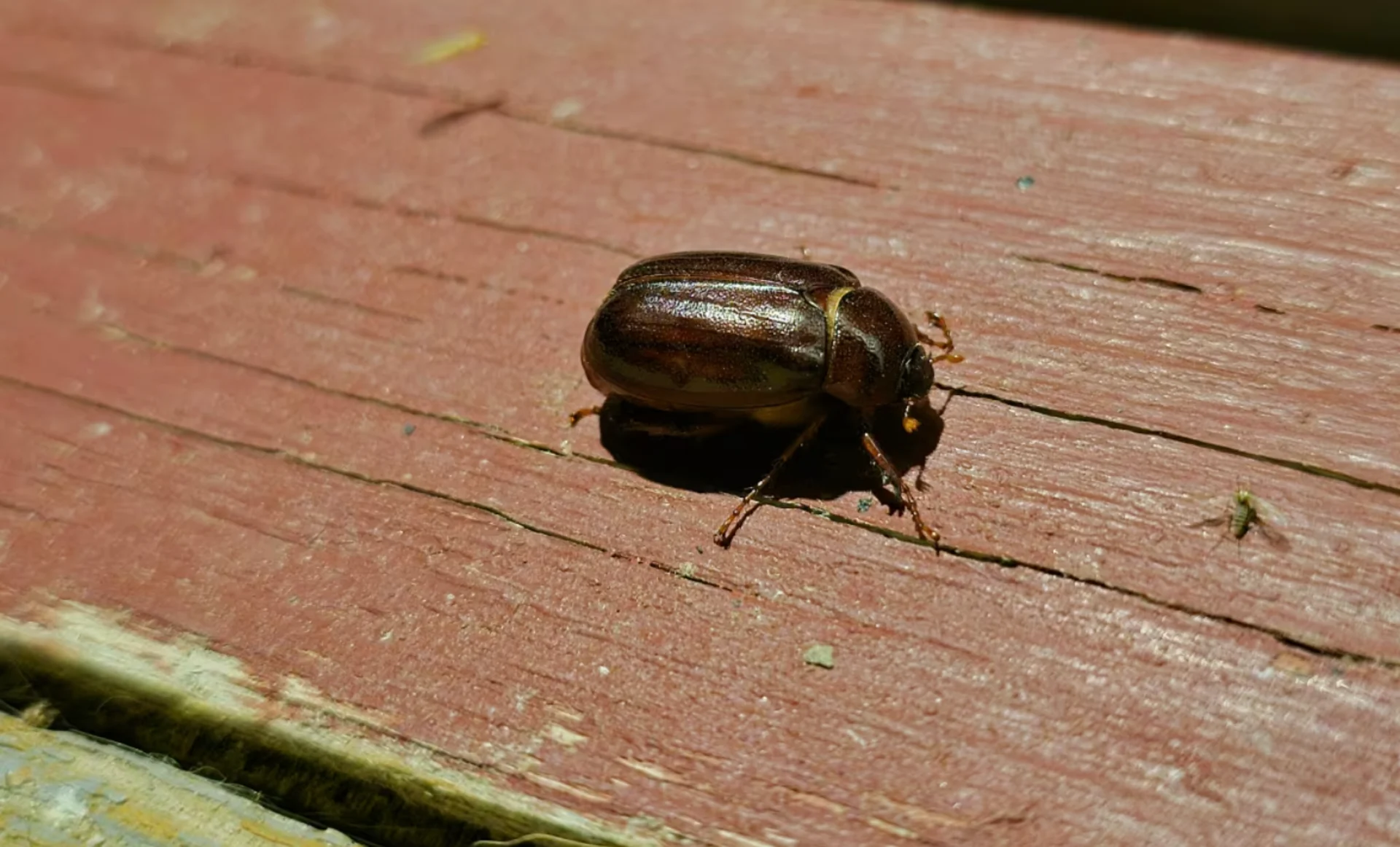
Pull up your hood — it's June bug season
Thump. Thump. Thump.
It's a sound some people associate with the month of June — the thwacking of June bugs hitting the window at night.
While some might feel creeped out by these large, flying beetles, others can see the beauty in them.
"Like a lot of insects, if you look at them really close up, you see there's a lot more to them than just the goo on your windshield," said University of New Brunswick biology professor Stephen Heard.
"They're pretty cool."
SEE ALSO: Pest … or snack? June bugs are the ‘croutons of the sky’

June bugs, part of the scarab beetle family, have a heavy body and they can't stop or change directions very well when flying. (Shane Fowler/CBC)
What are June bugs?
Heard said June bugs are technically a type of beetle in the scarab family.
They are about a centimetre-and-a-half long and quite solid and heavy, which is why they fly around rather clumsily.
They have stout legs and big spines, along with a hard exoskeleton and wings. These factors are likely what causes the crunching noise that can be heard when your pet decides to snack on one.
Their antennae have a club on the end, made up a bunch of little discs, Heard said. Those discs can fan out and are used to sniff plants to eat or to track other June bugs to mate with.
But the clunky beetles struggle with changing direction during flight. Compared to something like a dragonfly, said Heard, which has large wings and lighter body, June bugs have a not so favourable body-weight-to-wing ratio.
"They can get going, they can fly kind of in a straight line," he said. "They're not so good at manoeuvring."

June bugs have a hard exoskeleton and a hairy underside, which can be seen when examined up close. 'They're pretty cool,' says UNB biologist Stephen Heard. (Shane Fowler/CBC)
DON'T MISS: Five insects you might mistake for plants
Why June?
For those who fear the flying creatures, the horror is short-lived, since they seem to only come out during or close to the month of June.
Heard said while he doesn't know why they appear in June specifically, it is not uncommon for insects to appear in tight synchrony with the other members of their species.
They spend most of their life underground, around one-to-four years as a larva in the soil before entering an inactive resting stage — for another year — until they are finally ready to emerge as adults.
Above ground, "they're only going live for, oh I don't know, a week or two, maybe at most, if they're lucky," Heard says.
So for a beetle with such a short adult lifespan, it is ideal to be out at the same time as the rest of the June bugs in order to find a mate.
A lot of insects use different environmental cues which help them to emerge at the same time for the adult lifecycle.
Heard said while he doesn't know exactly what cue triggers June bugs, it is weather related. Further south, where the warmer weather starts earlier, the beetles come out earlier, too.
In the southern United States, Heard said they are actually called May beetles.
Despite the short lifecycle, Heard said that June bugs, like everything, have a place in the ecosystem. He said the beetles are a great source of food for lots of wildlife, including blue jays, crows, foxes, skunks and raccoons.
"June bugs are tasty little — well, not so little — tasty big treats that are relatively easy to catch," Heard said.
"So they really do good things for lots and lots of wildlife."
WATCH BELOW: It's not a bee or a wasp, why this cute bug is good to have around
This article, written by Hannah Rudderham, was originally published for CBC News.